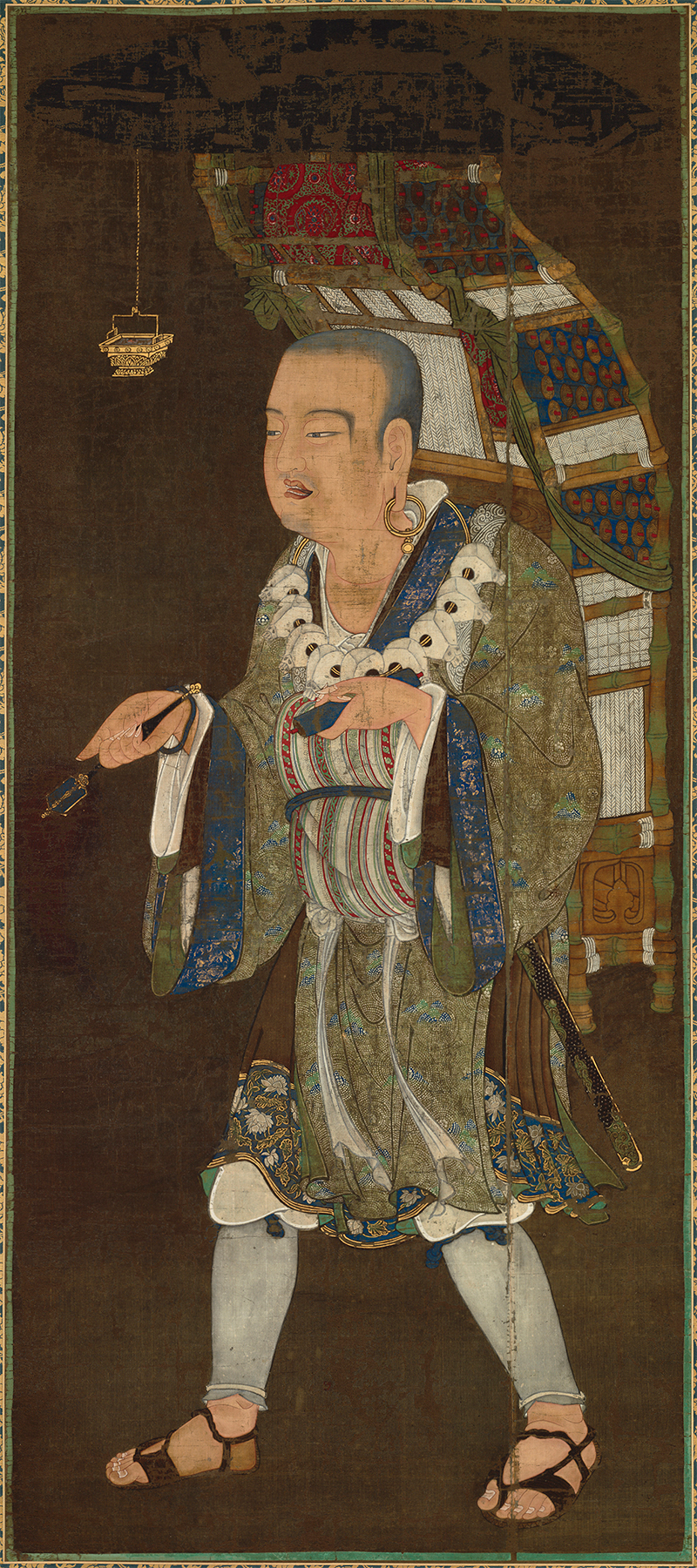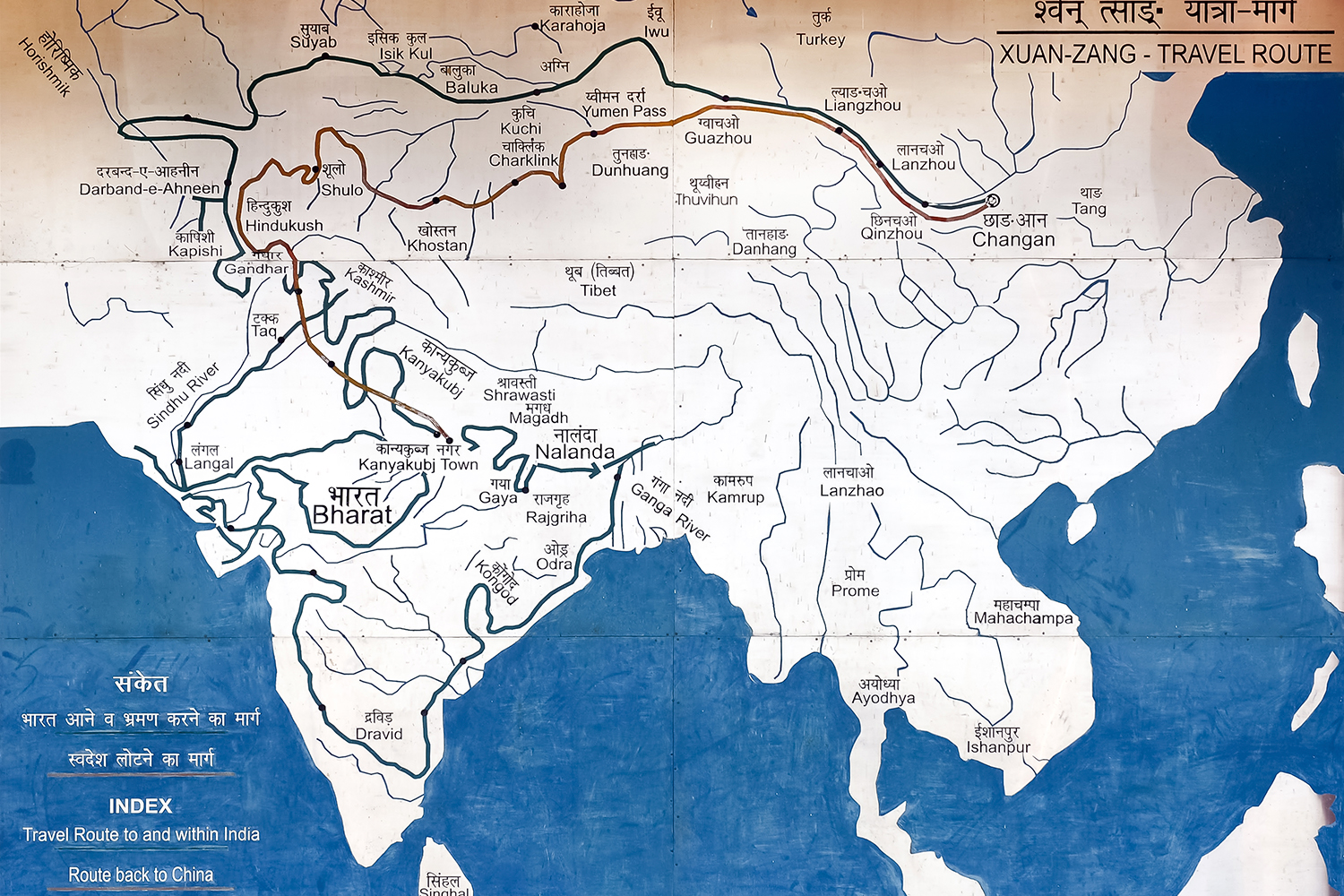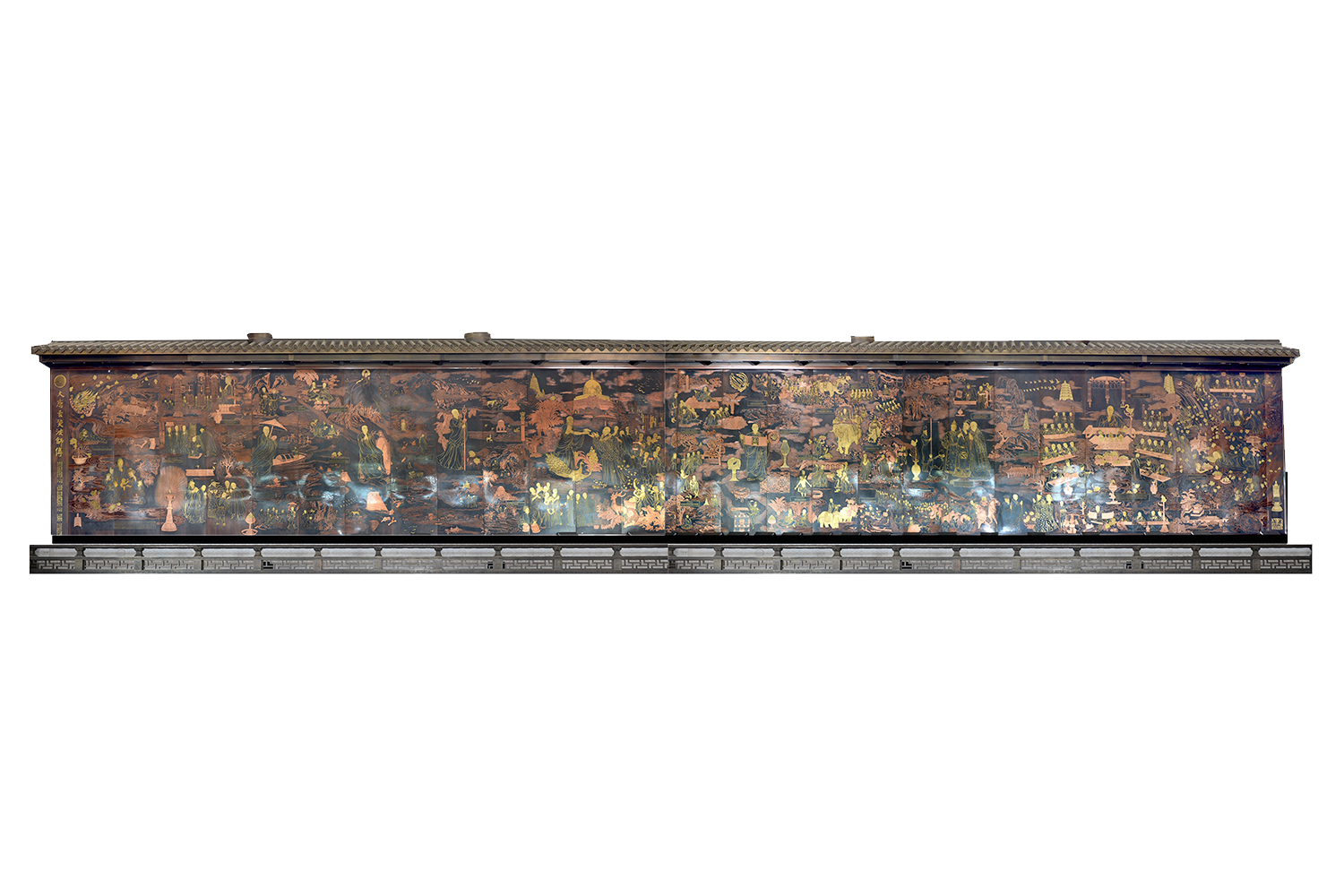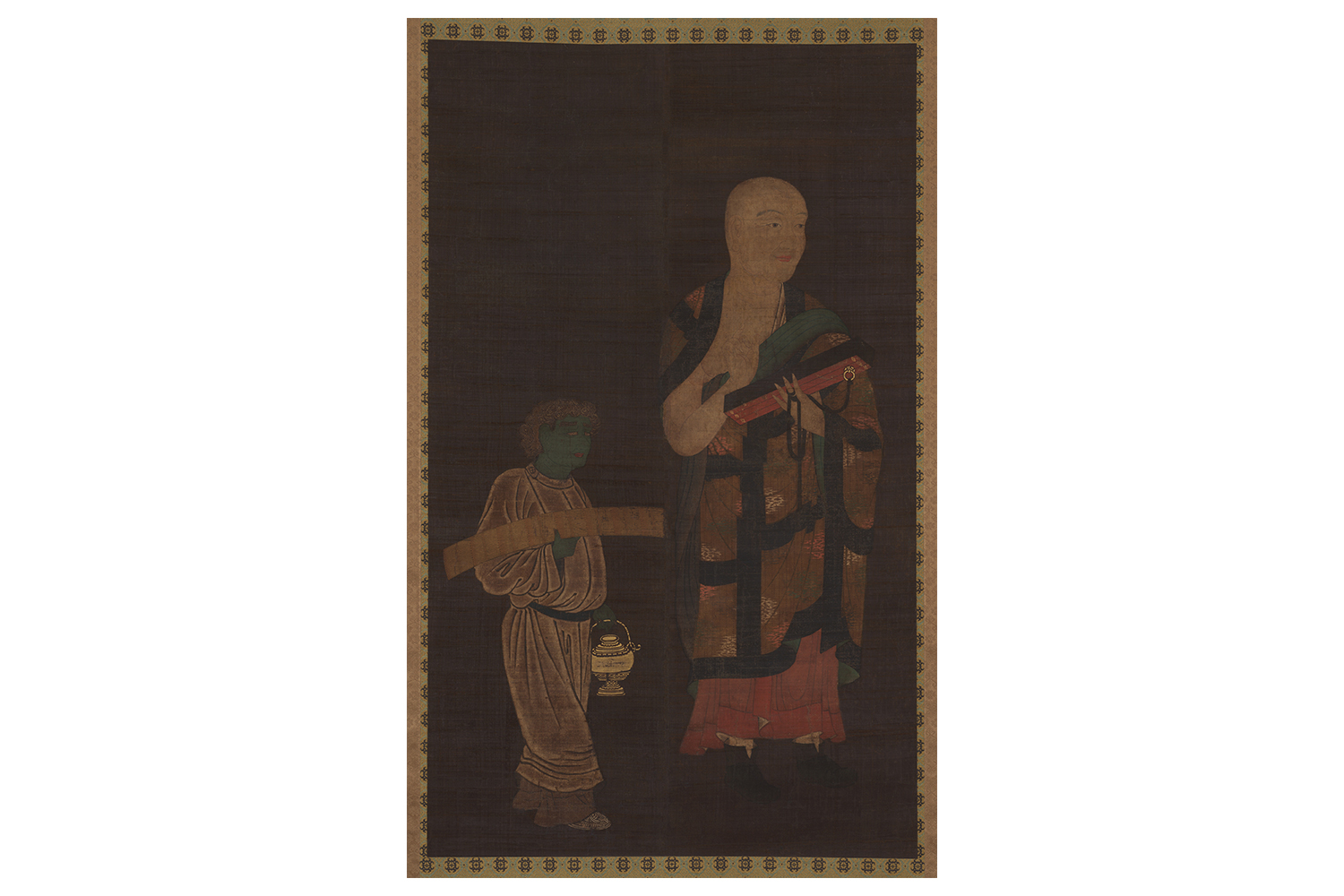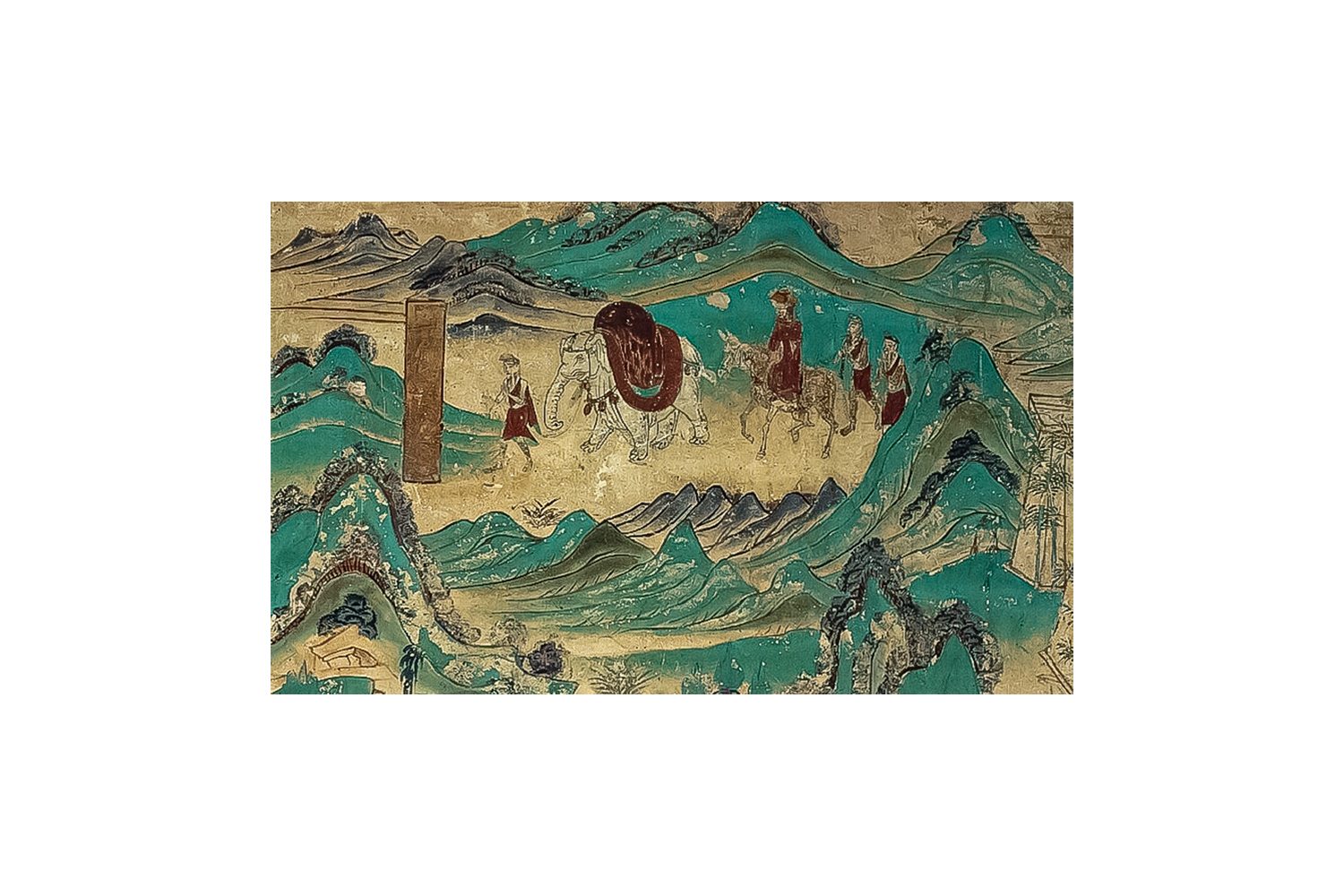ARTICLE
Xuanzang (b. c. 600 CE; d. 664 CE)
The accounts of Xuanzang’s travels, Datang-Xiyu-Ji (“Records of the Western Regions of the Great Tang Dynasty”), along with those of other Chinese pilgrim-travellers such as Faxian and Yijing, served as a key reference during the development of archeology in South Asia during the colonial period. The first translation of Datang-Xiyu-Ji was published in French in 1853 (Histoire de la vie de Hioun-Thsang et de ses voyages dans l’Inde, by Stanislaus Julien) followed by English translations, the earliest being Samuel Beal’s Si-Yu-Ki: Buddhist Records of the Western World from the Chinese of Hiuen-Tsiang (A.D. 629) (1884). These were instrumental in spurring interest in the exploration of Buddhist sites in British India, most notably Alexander Cunningham’s work at the Archaeological Survey of India (ASI) which involved retracing Xuanzang’s journey to rediscover historical Buddhist sites. The chronicles were also frequently referenced for contextualising Buddhist ruins across India and present-day Pakistan. More recently, sites in Vadnagar and Taranga in Gujarat have been linked to Xuanzang’s observations of Buddhist centres in the region, confirming that the region was an important Buddhist hub.
Xuanzang’s chronicles also provide insights into the political and economic life of South Asia in the seventh century through details such as the rulers of various territories, climate, food, systems of measurement, natural and manufactured products, Buddhist and Brahmin education and legal, economic and social practices.
In 2007, a memorial hall dedicated to Xuanzang was inaugurated at the Nava Nalanda Mahavihara in Bihar, which houses the relic casket of a bone believed to belong to Xuanzang. Temples in honour of Xuanzang are also situated in China and Taiwan. Xuanzang’s account of a 304-metre long reclining Buddha in Afghanistan inspired a series of archeological explorations from 2004 onwards around Bamiyan, and although archeologists were able to locate fragments of a smaller reclining Buddha in the vicinity, the statue described by Xuanzang is yet to be found.
In 2020, Cardiff University and the Bihar Heritage Development Society announced the Xuanzang Trail Project to map Buddhist sites in Bihar through a critical examination of Xuanzang’s texts and archeological exploration. In 2022, the project had found remains of stupa structures as well as other antiquities near Bodhgaya and Patna.
Bibliography
Cheung, Han. “Xuanzang’s Posthumous Journey.” Taipei Times, November 22, 2015. Accessed February 23, 2023. https://www.taipeitimes.com/News/feat/archives/2015/11/22/2003633038.
Hammer, Joshua. “Searching for Buddha in Afghanistan.” Smithsonian Magazine, 2010. https://www.smithsonianmag.com/travel/searching-for-buddha-in-afghanistan-70733578/.
Internet Encyclopedia of Philosophy. “Xuanzang (Hsüan-tsang) (602—664).” Accessed April 11, 2023. https://iep.utm.edu/xuanzang/.
“Mapping the Buddha’s life: Reconstructing the Xuanzang Trail.” Cardiff University, December 15, 2022. Accessed February 23, 2023. https://www.cardiff.ac.uk/news/view/2690420-mapping-the-buddhas-life-reconstructing-the-xuanzang-trail.
Nava Nalanda Mahavihara. “Xuanzang Memorial Hall.” Accessed February 23, 2023. https://www.nnm.ac.in/sanskritik-gram/xuanzang-memorial-hall/.
Raj, Dev. “Bihar: Scholars Retrace Footsteps of Hiuen Tsang.” Telegraph, June 4, 2022. Accessed February 23, 2023. https://www.telegraphindia.com/india/scholars-retrace-footsteps-of-hiuen-tsang-to-discover-archaeological-remains-antiquities-in-bihar/cid/1868221.
Sen, Tansen. “The Travel Records of Chinese Pilgrims Faxian, Xuanzang and Yijing.” Education About Asia 11, no. 3 (Winter 2006): 24–33. http://afe.easia.columbia.edu/special/travel_records.pdf.
Sharma, Ritu. “Three-day Vadnagar International Conference: Relics from Vadnagar, Taranga Confirm North Gujarat As a Major Buddhist Centre.” Indian Express, May 20, 2022. Accessed February 23, 2023. https://indianexpress.com/article/cities/ahmedabad/three-day-vadnagar-international-conference-relics-from-vadnagar-taranga-confirm-north-gujarat-as-a-major-buddhist-centre-7926684/.
Trautmann, Thomas R., and Carla M. Sinopoli. “In the Beginning Was the Word: Excavating the Relations Between History and Archaeology in South Asia.” Journal of the Economic and Social History of the Orient 45, no. 4 (2002): 492–523. http://www.jstor.org/stable/3632874.
“Valabhi.” In Encyclopedia Britannica. Accessed April 11, 2023. https://www.britannica.com/place/Valabhi.
“Xuanzang.” In Encyclopedia Britannica. Accessed February 22, 2023. https://www.britannica.com/biography/Xuanzang.




